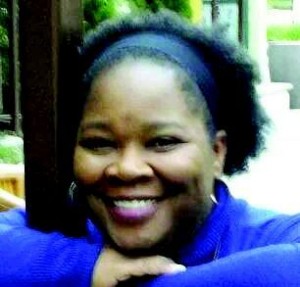
JAUMARRO CUFFEE
THE SIGNAL
Once again, the times are changing. It’s not a simple change of seasons. A whole age is disintegrating into digital.
Once upon a time there was storytelling. There still is storytelling, but by the 15th century those stories, fables and battles were captured in print.
Those printed stories were bound in books, which began to inhabit amazing places called libraries and bookstores. We could not only borrow these books, we could buy them and fill our bookshelves with their amazing yarns.
This may not be the historical version, by way of Gutenberg’s invention of the printing press, but it gets us to my day and age – an age of printed books.
Books come in all shapes and sizes. There are board books as big as your 6-year-old nephew and chapbooks small enough to fit inside your fanny pack.
More and more 6-year-olds have electronic toys and tablets that can read them a story, make farm sounds and provide them a doodling surface. But that tablet will never double as a fort.
Nowadays, the pages of chapbooks can be viewed on the phone in your back pocket. But those pages won’t have the lingering scent of Aunt Val’s White Shoulder perfume.
As the age of electronics progresses, we see the dawning of an age of e-books.
Who needs to horde hardcopies when you can summon endless pages of Austen, Dickens and Dumas, satisfy your insatiable thirst for Steinbeck, Stoker and Shakespeare, and then go on to read volumes of Grisham, Geisel and Fitzgerald on a single e-reader?
Who needs books filling up shelves and collecting dust when your entire library can fit on your tablet or the-ever present Cloud and clean up with a miniscule microfiber cloth?
Who needs books when you have the power of the amazing e-book?
We do… or at least I do.
The only thing between the pages of an e-book is a click, a tap or a swipe. There are no pressed flowers from your first formal dance. There are no overseas letters from your best bud who enlisted in the Navy. There are no notes scribbled next to Grandma Charlotte’s favorite passages. You may find an image of those flowers on Instagram or the letter archived in your email, but grandma’s scribble may only be in the pages of her favorite book she used to read. Those things, the non-digital real ones, can be pressed, preserved and passed on in the pages of a book.
Power, even the power of e-books, corrupts. In the wake of e-books, chain and neighborhood bookstores have been laid to rest. To survive, others have graphed e-books into their inventory as a bridge to span the digital divide.
However, when the power supply is corrupted, or interrupted, by the devastation of a hurricane blowing in from the Gulf, the lights go out and the glow of e-books may eventually fade to black. Printed books can continue to illuminate by flashlight, candlelight, daylight or even flaming crayon, which burns about 15 minutes.
The age of e-books is not a completely dark age. E-books provide many with a variety of reading material they may not be able to afford or acquire in printed volumes. E-books allow people who are without transportation or otherwise homebound to pluck a collection of poetry off the Internet as easily as they can pull it off their bookshelf. E-textbooks offer a measure of financial relief to UHCL students and others trying to stretch their academic dollars.
Times are changing. E-books are edging out the printed page. Streaming music and movies are making museum pieces of CDs and DVDs. Newspapers are going from newsprint to no print. Even The Signal is going mostly digital after the next issue.
Times are changing. The printed book is not extinct, but it is one letter short of an e-book.

